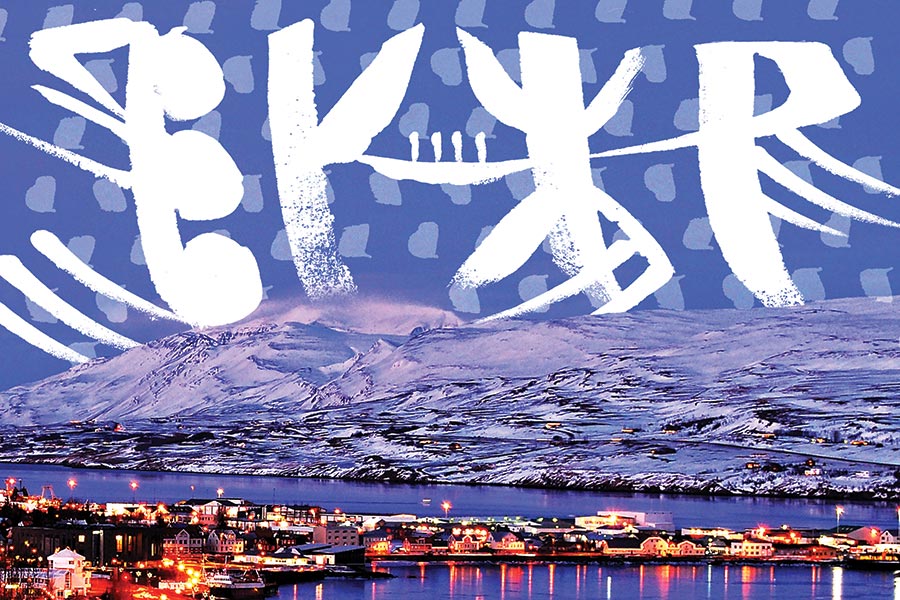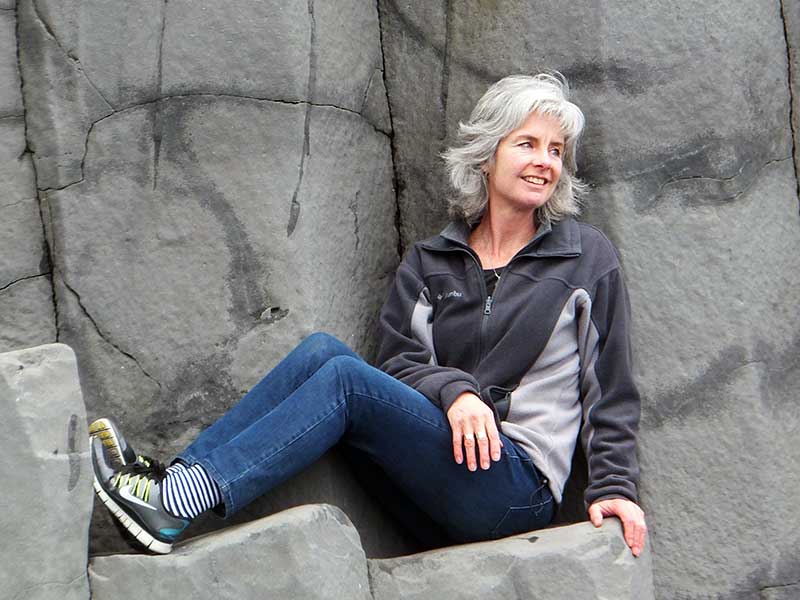LIFE OF THE MIND
Icelandic Uncanny
Spirit practices in Iceland sounded bogus to one skeptical Nazareth professor. Here's what changed her mind … and her worldview.
by Corinne Dempsey
artwork by Sherri Baker Hamilton '97

People often ask me, “How did you end up in Iceland?” It’s a good question. My most recent book, Bridges between Worlds: Spirits and Spirit Work in Northern Iceland (NY: Oxford University Press, 2016), certainly veers from my usual work on south Indian Christianity and North American Hinduism. Furthermore, to be frank, the world of mediums and ghost hunters has never held much interest. The scene has always struck me as rather kitschy, perhaps rigged, or, at worst, preying upon the gullible and the grieving. Leading up to my Icelandic adventures, I had dismissed the world of spirits as manipulative, creepy, and best if left alone.
I owe my change of course to a friend, who suggested I come to her northern hometown of Akureyri to, as she put it, “talk to the people who talk to dead people.” These people, she explained, uphold a tradition of spirit practices that, although controversial, are alive and well throughout Iceland. Initially balking at the idea, it occurred to me that research in Iceland could help me write one of the chapters for a forthcoming book, Bringing the Sacred Down to Earth: Adventures in Comparative Religion (NY: Oxford University Press, 2012). I would spend four months in Akureyri learning how Icelandic spirit practices could fruitfully be compared with Hindu yogic abilities.
Two weeks after arriving my plan shifted. I found that spirit practitioners were actually “normal” people who, for the most part, held down day jobs such as auto mechanics, social workers, or tax accountants. The few fulltime mediums I met did not appear to be getting rich or famous. Stereotypes dashed and gears switched, I returned to Akureyri for two more extended stays to continue my research.
I currently view Icelandic spirit work, known as andleg mál, as a multi-tiered bridge, generally known for easing the distance between earth and spirit realms, likewise spanning histories, worldviews, and cultures. My book describes the tradition as shaped by pre-Christian Icelandic traditions, folk beliefs, and Spiritualism that arrived late to Iceland after its boom and bust in North America. Andleg mál also brings skeptics and believers into conversation, especially in healing contexts where spirit-adverse clients place their last hopes in its practices and where healers and medical professionals who share patients encounter a collision of worldviews.
The heart of my work lies with stories generously offered by andleg mál practitioners. Often struggling with fear and shame as teens and young adults, exacerbated by everyday standards of normality and sanity, they report finding in andleg mál a means not only to manage their “gifts” but also to make them useful. This usefulness typically surfaces in trance and healing practices that aim to benefit those on both sides of the earth-spirit divide and that run in both directions. Amid the assortment of spirit accounts, I relate a few of my own that, requiring worldview leaps, set me out on a bit of a limb.
Yet there is purpose to this particular limb. Over the past several decades, religion scholars have felt an increased urgency to bridge worldview gaps such that the incomprehensible Other might be humanized—this on a shrinking planet where the consequences of not doing so are often dire. Faced with the Icelandic uncanny, my hope is that through personal stories graciously offered, sprinkled with worldview-altering discoveries of my own, readers might critically examine possible limitations of our own, modern worldview. Helping narrow the expanse is that Icelanders today are among the most highly educated, globally connected people on the planet and that andleg mál participants, as members of mainstream society, are not an oddball subset.
I probably ended up in Iceland for many reasons. The most important, for me, is this task of humanizing the Other, of softening assumed divides, that pervades all my work. Drawing similarities between spirit specialists and those who read about them, my hope is to build bridges of comprehensibility. Crossing them, I submit, will be entirely up to the reader.
Corinne Dempsey, Ph.D., is an associate professor of religious studies and director of the international studies program at Nazareth, where she holds the Rosemarie Beston Chair in International Studies.
